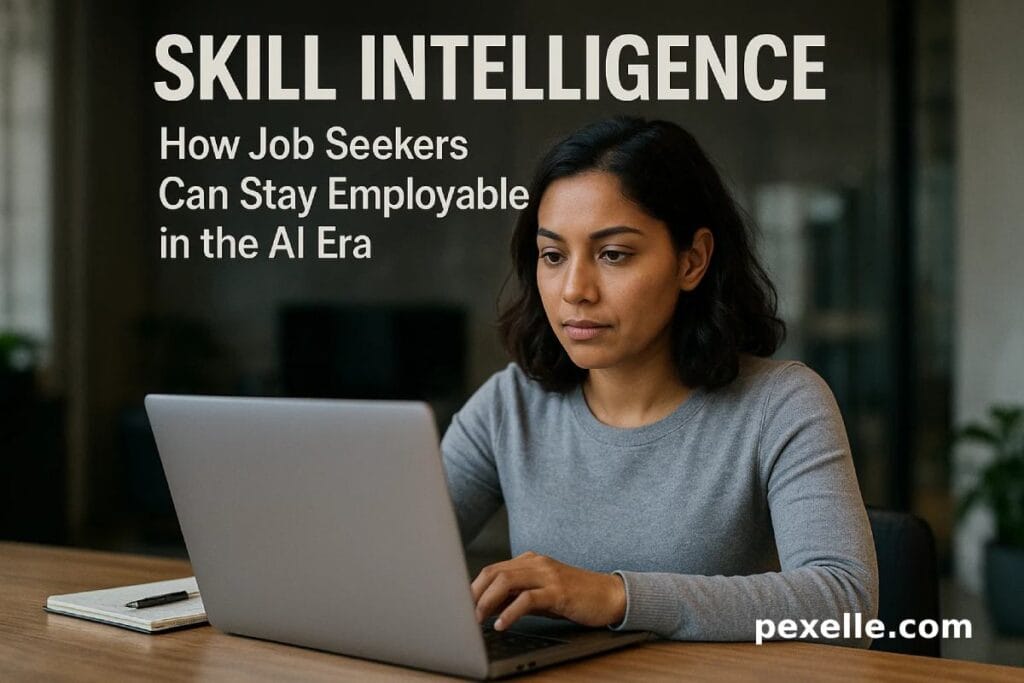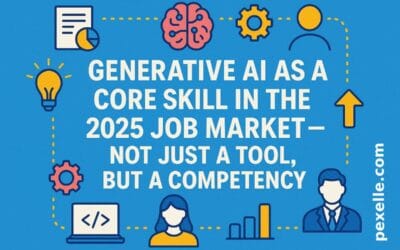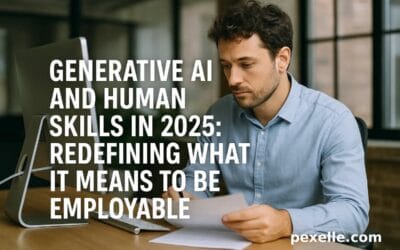Skill Intelligence: How Job Seekers Can Stay Employable in the AI Era

1. Introduction: The Death of the Degree?
The labor market is changing faster than ever before. Traditional hiring — built around degrees, titles, and years of experience — is losing relevance in an economy defined by automation, artificial intelligence, and global digitalization.
According to the World Economic Forum’s Future of Jobs 2025 report, nearly 40% of existing skills will change or become obsolete by 2030. This is forcing organizations to rethink not only what they hire for, but how they define competence in the first place.
Enter Skill-Based Hiring (SBH) — a system that values what people can do over what paper they hold. It’s more than a hiring trend; it’s a transformation in how companies measure human potential.
2. What Is Skill-Based Hiring?
Skill-Based Hiring means evaluating candidates based on demonstrated competencies, practical ability, and measurable skills rather than formal credentials or years of service.
Instead of filtering applicants by their university name or degree type, employers assess their actual capacity through:
- Skill assessments and micro-certifications
- Portfolio and project-based evaluation
- AI-driven skill matching platforms (like Pexelle)
- Work simulations, coding tests, and real-world challenges
In short, the résumé is no longer the gatekeeper — the skill is.
3. Why It’s Replacing Degree-Based Hiring
Several macro forces are accelerating this transition:
a. Technology Disruption
The rise of automation, AI, and no-code tools has flattened job barriers. A self-taught developer can outperform a computer science graduate if they can deliver faster, cleaner, and more secure code.
b. Global Talent Platforms
Platforms like Upwork, Toptal, and Pexelle have democratized visibility for skilled professionals, regardless of geography or degree.
Employers now access a global talent pool, where skill verification matters more than formal education.
c. Evidence of ROI
Companies adopting skill-based hiring report up to 30% faster time-to-hire and reduced turnover, because they recruit for actual job performance instead of credentials.
d. Talent Shortage Reality
In 2025, 75% of employers globally report difficulty filling roles due to skill gaps. Degrees alone are failing to predict competence in fast-evolving fields like cybersecurity, data analysis, renewable energy, and AI ethics.
4. The Strategic Opportunity for Companies
Skill-based hiring is not a fad; it’s a strategic necessity. For organizations, adopting this model provides four key advantages:
a. Agility in Workforce Planning
When roles evolve rapidly, degree requirements become outdated.
By focusing on skills, HR teams can restructure roles quickly to meet new technological realities without rewriting entire job hierarchies.
b. Broader Talent Pools
Skill-first approaches open doors to non-traditional candidates — self-taught programmers, bootcamp graduates, women returning to work, or freelancers with years of project experience but no formal degree.
c. Improved Diversity and Inclusion
Degree-based filters often perpetuate socioeconomic bias. Removing them encourages fairer access and brings in diverse perspectives crucial for innovation.
d. Continuous Capability Mapping
Skill intelligence systems (like those used by Pexelle) allow companies to visualize their workforce’s strengths and weaknesses — a dynamic “skills map” that guides training, redeployment, and hiring priorities.
5. The Risks and Challenges
However, skill-based hiring also carries real risks if executed poorly.
a. Skill Validation and Trust
How can employers verify whether a claimed skill is real? Without standardized certification or blockchain-based verification, HR departments risk hiring on false signals.
b. Over-Fragmentation of Credentials
With thousands of micro-certifications on the market, it’s difficult to compare one candidate’s badge with another’s. The ecosystem needs interoperability and recognized standards.
c. Short-Termism
Some companies might over-focus on immediate technical skills while neglecting soft skills like leadership, adaptability, and ethical judgment — qualities that sustain organizations long-term.
d. Data Bias
AI-based hiring tools may inherit hidden biases from training data. Skill-based doesn’t automatically mean bias-free. Algorithms must be carefully designed, audited, and localized.
6. What Job Seekers Must Do Now
The age of skill-based hiring is both liberating and demanding for job seekers. Degrees are no longer enough — but neither is random skill collection. Strategic learning is the new game.
a. Identify Transferable Skills
Focus on skills with longevity — analytical thinking, communication, digital literacy, and adaptability.
Combine them with industry-specific tools (e.g., Python for data, Figma for design, Solidity for smart contracts).
b. Learn from Verified Sources
Seek learning platforms that issue recognized micro-credentials, ideally backed by employers or industry alliances.
Examples: Coursera, Google Career Certificates, IBM SkillsBuild, or local equivalents integrated with Pexelle’s skill graph.
c. Build a Skills Portfolio
Showcase your projects publicly — GitHub, Behance, Kaggle, or LinkedIn. A well-documented portfolio is worth more than a GPA.
d. Measure ROI
Learning costs time and money. Prioritize skills that align with employer demand forecasts. Pexelle and similar platforms can show which skills are trending and what salary outcomes they lead to.
7. The Iranian Context: Are We Ready?
Iran’s labor market reflects both opportunity and friction in adopting skill-based hiring.
Current Reality
- Academic saturation: A large number of university graduates, but limited alignment with real industry needs.
- Private training growth: Bootcamps and online academies (e.g., in programming, digital marketing, UI/UX) are filling the gap.
- Employer inertia: Many organizations still rely on degrees and years of service as main filters.
Challenges
- Lack of national skill-taxonomy frameworks.
- Weak integration between universities, industry, and tech ecosystems.
- Limited access to verifiable digital credentials.
Opportunities
However, the Iranian youth demographic and the growing startup ecosystem create ideal conditions for a shift toward skill-intelligence platforms.
If the private sector leads — by using transparent, verifiable skill-matching — Iran could leapfrog traditional models and integrate directly into global digital labor markets.
8. The Role of Skill Intelligence Platforms (e.g., Pexelle)
Skill-based hiring needs an infrastructure of trust — systems that can map, verify, and visualize human capability at scale.
Platforms like Pexelle serve as this bridge by:
- Collecting structured skill evidence from users (projects, tests, credentials).
- Using AI to match individual skill graphs with real job data.
- Providing organizations with dashboards for skills-gap analysis and future workforce planning.
This transforms hiring from a guessing game into a data-driven partnership between talent and employers.
9. Strategic Recommendations
For Companies
- Replace rigid degree filters with skills-based assessments and real project evaluations.
- Implement skills taxonomies and dynamic workforce maps.
- Encourage internal mobility — allow employees to re-skill into new digital roles.
- Partner with platforms like Pexelle to access verified micro-skill profiles.
For Job Seekers
- Build stackable micro-credentials aligned with emerging industries.
- Document every project — visibility matters.
- Invest in both hard and human skills.
- Stay agile: every year, refresh your skill graph with new competencies.
10. Conclusion: From Resumes to Real Capabilities
Skill-based hiring is more than an HR innovation — it’s a strategic transformation of how societies value human capital.
Degrees will not disappear, but they are no longer the ultimate currency of employability.
What matters most in 2025 and beyond is verifiable, adaptable capability.
For organizations, it’s the path to resilience.
For individuals, it’s the path to freedom.
For nations like Iran and the broader MENA region, it’s the bridge to participate in the global digital workforce — not as consumers, but as creators.
The future belongs to those who can prove what they can do, not just who they are on paper.
Source : Medium.com




